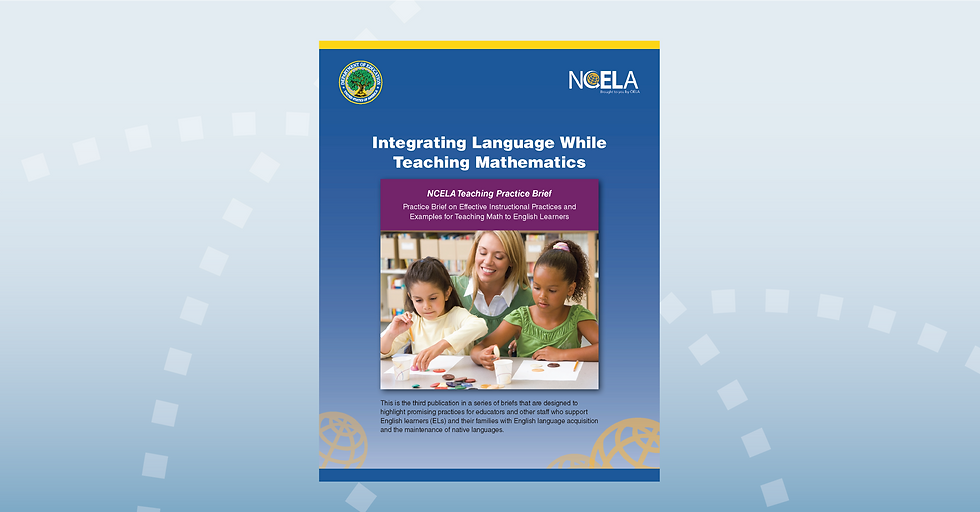Sustain an Explicit Focus on Language as it is Used in Mathematics
- Patricia Lopez-Hurtado

- May 3, 2022
- 2 min read
By Haiwen Chu and Leslie Hamburger

One activity within school mathematics that may be particularly challenging for English Learners are story problems. Story problems, while set in real-world contexts, may require background knowledge in order to fully unpack the underlying mathematical relationships. It will be important to signal to English Learners what they need to look for in story problems, as well as to develop collaborative activities in which they engage in collective sense-making about problems. To support English Learners in interpreting these story problems, teachers can use a “Mathematics Clarifying Bookmark” which serves as a discussion guide for a pair of students as they unpack the meaning of a problem together.
As with the guidance cards for mathematical practices described in the previous post, the Mathematics Clarifying Bookmark signals two choices. First, students select a generative strategic action, such as identifying what the problem is asking or information that is given in the left-hand column. After making this choice, students can select the accompanying language or formulaic expressions in the right-hand column. As a pair of students discuss the problem, they respond to each other’s ideas, clarifying with each other what the problem is about.
What you can do | What you can say |
Identify what the problem is asking. | The unknown in this problem is… The units of the unknown are… Reasonable values for the unknown would be… |
Identify the given data and constraints. | The variables or quantities in this problem are… The values given in the problem are… This problem assumes that… |
Draw a picture or model to represent the problem in a different way. | I can show this problem by… A model that represents this problem is… I can represent this part of the problem with… |
One issue that comes up often in the reading of story problems is the issue of variable. It is useful to offer English Learners a working definition of variable or quantity as something that we care about, which can be counted or measured using a number and some unit. This working definition will be helpful because story problems frequently only explicitly name the units of the givens or the unknown, rather than the name of the variable with units. Being able to name the variable allows students to refer to it, and to describe relationships with other variables (e.g., “As the time I work increases, the amount of money I make also increases”).
Additional approaches and resources regarding this practice are explored in the full “Integrating Language While Teaching Mathematics” brief. Click here to learn more.



Helping kids master their multiplication facts can be a journey, and having the right tools makes a big difference! If you're looking to Learn Multiplication for Free with Interactive Charts, online resources can be fantastic. Many sites offer printable charts (like 1-100 grids), fun games, and step-by-step explanations that make learning more engaging and less like a chore. Interactive elements where kids can click and see results or play timed challenges can really help solidify those essential math facts in a fun way.